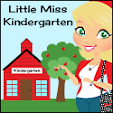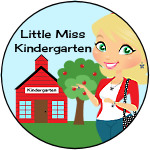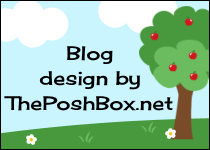Hey Kinder Friends,
I started today off thinking about counting in Kindergarten and I started thinking about some of my favorite counting things...dots. And I thought what a great day to talk about counting! Ever since I was a little girl I loved to count. I counted anything and everything. I just always wanted to know how many! I wanted to know the number for anything around me. In my earliest childhood memories, I can recall guessing how many of this or that and counting it out just to recount to make sure I was right the first time! I can remember counting in my head when I was bored or when I was waiting...I hated waiting and I hated being bored. I just always wanted to be thinking of something, so for me counting kept me busy.
I started today off thinking about counting in Kindergarten and I started thinking about some of my favorite counting things...dots. And I thought what a great day to talk about counting! Ever since I was a little girl I loved to count. I counted anything and everything. I just always wanted to know how many! I wanted to know the number for anything around me. In my earliest childhood memories, I can recall guessing how many of this or that and counting it out just to recount to make sure I was right the first time! I can remember counting in my head when I was bored or when I was waiting...I hated waiting and I hated being bored. I just always wanted to be thinking of something, so for me counting kept me busy.
When I began teaching Kindergarten, I started collecting counting books and that obsession has never ended. I honestly do not think you could have too many counting books when you teach Kindergarten anyway but who's counting, right? And you know Ten Black Dots is at the top of the list!
As a child I can also remember creating my own mental images in order to help me solve simple math problems. For simple math, it was easier for me to remember a snapshot picture or image in my head instead of actually counting.
As a child I do not recall any teacher teaching me any strategies to be more efficient in math. In fact, the only thing I remember about my childhood math instruction was the right and the wrong. And I have often wondered if I had been taught math strategies and if the focus at times could have included understanding my mathematical thinking or the mathematical thinking of others, then would I have a different perception of my own mathematical abilities today?
Even after 14 years of Kindergarten, it still amazes me that children have a natural ability to understand numbers at such a young age. I often wonder where did they pick it up if Kindergarten was their first school experience? And if they come to Kindergarten with very little number sense it makes me wonder...why.
My love for teaching math continues to grow from that tiny seed that was planted somewhere within me years ago... I am now surrounded by wonderful mentors that push me along to teach math better than before. And as I was digging around looking for a little inspiration I ran across Ten Black Dots. On a whim I decided to create some printables to go along with the book so that the next time around I would have a go to file for some print and go math fun on the run.
This download helps to build the foundation for meeting the standards:
CCSS.Math.Content.K.CC.A.3 Write numbers from 0 to 20. Represent a number of objects with a written numeral 0-20 (with 0 representing a count of no objects).CCSS.Math.Content.K.CC.B.4a When counting objects, say the number names in the standard order, pairing each object with one and only one number name and each number name with one and only one object.CCSS.Math.Content.K.CC.B.4b Understand that the last number name said tells the number of objects counted. The number of objects is the same regardless of their arrangement or the order in which they were counted.CCSS.Math.Content.K.CC.B.4c Understand that each successive number name refers to a quantity that is one larger.CCSS.Math.Content.K.CC.B.5 Count to answer “how many?” questions about as many as 20 things arranged in a line, a rectangular array, or a circle, or as many as 10 things in a scattered configuration; given a number from 1–20, count out that many objects.This download was created to use with the book Ten Black Dots by Donald Crews. The printables enclosed are simple print and go resources that can be used along with the book. You will notice that there are several pages that contain the same images but in different configurations so that the children have multiple opportunities to identify the dot arrangements. The objective is that the children will be able to instantly recognize the dot arrangements. The multiple pages allow for many opportunities to work towards meeting those standards without having to count. The resources are meant to be able to be used over time and throughout the year as needed.
Grab your copy of the My Number Book freebie by clicking on the image above!
Not only do I love dots...I love organized dots too. Simple visual organization of dots to use when talking about numbers in Kindergarten. And you know ten frames have to be some of my favorite tools. Ten frames help to create those mental images that I remember as a child. I created these Ten Frame Playdough mats to use in class because they are a staple in the classroom. I wanted a print and go file that I could use year after year. Usually by the end of the year I have to print them again because they have been used so much. No big deal...just print, laminate and go. I guess the hardest part is just deciding on what color to print them on or if I want to bind them and make books or just keep them as mats...or both! Click on the image above for more information!









































No comments:
Post a Comment